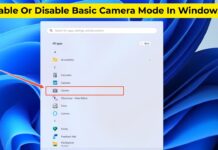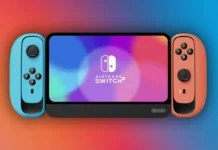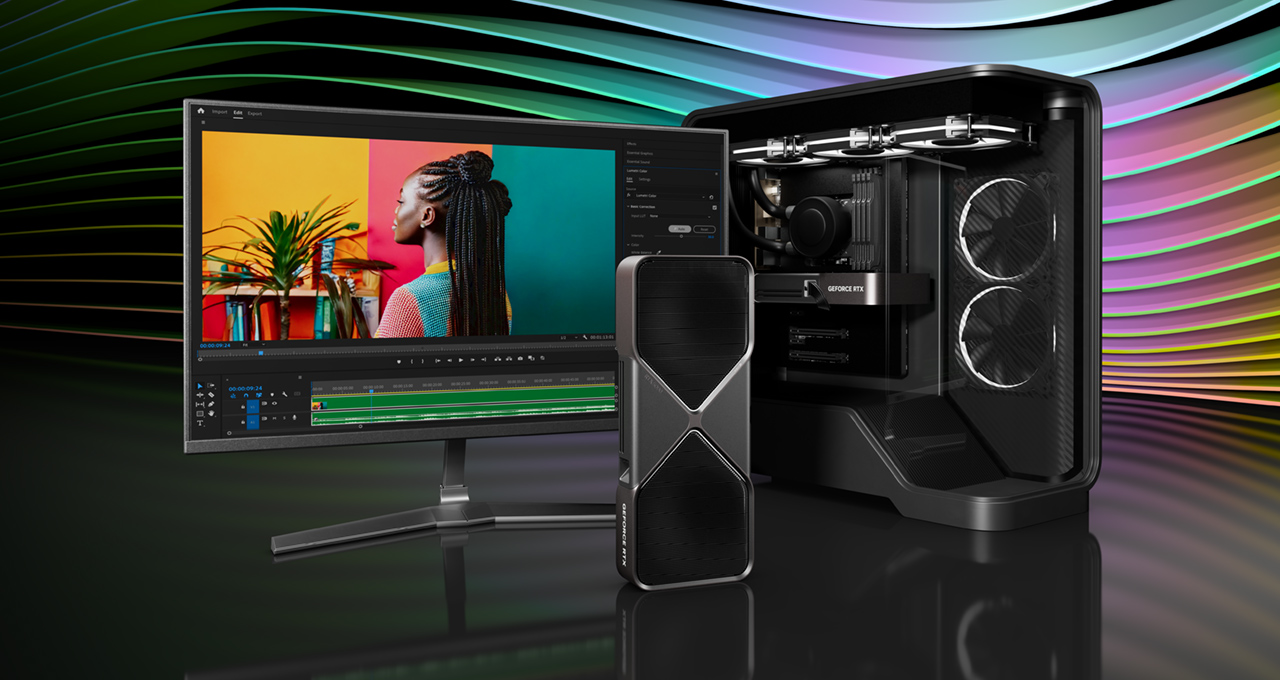NVIDIA’s New GeForce RTX 5090 and RTX 5080 GPUs: A Leap in AI and Creative Technology
The tech world is abuzz with the latest release from NVIDIA: the GeForce RTX 5090 and RTX 5080 graphics processing units (GPUs). Built on the cutting-edge NVIDIA Blackwell architecture, these GPUs promise to transform the landscape of generative artificial intelligence (AI) content creation and significantly enhance creative performance across various fields. This article delves into the features and capabilities of these revolutionary GPUs, highlighting their potential impact on both professionals and enthusiasts.
Pioneering Performance with NVIDIA Blackwell Architecture
The GeForce RTX 5090 and RTX 5080 are the latest additions to NVIDIA’s prestigious lineup of GPUs. These models are designed with the innovative Blackwell architecture, which offers a substantial leap in performance and efficiency compared to previous generations. One of the most notable upgrades is the fifth-generation Tensor Cores, which support FP4 (Floating Point 4) precision. This advancement allows for reduced video random access memory (VRAM) requirements when running generative AI models, effectively doubling the performance of these applications.
For instance, Black Forest Labs’ FLUX models, now available on the popular AI platform Hugging Face, require less than 10GB of VRAM at FP4 precision. In contrast, they needed over 23GB at FP16. When using a GeForce RTX 5090 GPU, the FLUX.1 [dev] model can generate images in just over five seconds, a substantial improvement over the 15 seconds required at FP16 or 10 seconds at FP8 on the previous GeForce RTX 4090 GPU.
Advanced Encoding and Rendering Capabilities
The GeForce RTX 50 Series GPUs are equipped with ninth-generation encoders and sixth-generation decoders, which support 4:2:2 chroma subsampling. This feature significantly enhances encoding quality for High-Efficiency Video Coding (HEVC) and AV1 formats, ensuring creators experience smooth 3D rendering viewports. The fourth-generation Ray Tracing (RT) Cores, combined with Deep Learning Super Sampling (DLSS) 4 technology, provide a seamless and highly detailed rendering experience for 3D artists and developers.
As PC World notes in their review, "The GeForce RTX 5090 is a content creation powerhouse," highlighting its potential to redefine the standards of creative performance in the industry.
Memory and Bandwidth Enhancements
The GeForce RTX 5090 GPU is a formidable piece of hardware, boasting 32GB of ultra-fast GDDR7 memory and an astounding memory bandwidth of 1,792 GB/sec. This represents a 77% increase over the GeForce RTX 4090 GPU. The increased bandwidth and memory capacity facilitate faster data processing and smoother workflows, reducing export times by a third compared to the previous generation. The GPU also features three encoders and two decoders, further optimizing video editing and rendering tasks.
The GeForce RTX 5080 GPU, while slightly less powerful, still features impressive specifications. It includes 16GB of GDDR7 memory, offering up to 960 GB/sec of total memory bandwidth, a 34% improvement over its predecessor, the GeForce RTX 4080 GPU. Equipped with two encoders and two decoders, the RTX 5080 GPU is well-suited for handling demanding video editing workloads with ease.
Creative Bloq’s review of the RTX 5080 highlights its balance of power and affordability, making it a viable option for creative professionals seeking high performance without breaking the bank.
Innovations in NVIDIA Broadcast App
In tandem with the release of these GPUs, NVIDIA has launched an updated version of the NVIDIA Broadcast app. This app now includes two new beta AI effects: Studio Voice and Virtual Key Light. Studio Voice enhances microphone audio to match the quality of high-end equipment, while Virtual Key Light offers even lighting for subjects, akin to a physical key light used in photography and videography. These new features are tailored for streaming and podcasting applications and are compatible with GeForce RTX 4080, 5080, and higher models.
Additionally, the updated app enhances existing features such as Background Noise Removal and Eye Contact, which stabilizes gaze and introduces subtle eye movements for a more natural appearance. The Virtual Background feature has been improved for better separation between the foreground and background.
The user interface of the NVIDIA Broadcast app has also been revamped for better usability, allowing users to apply multiple effects simultaneously and offering a side-by-side camera preview option. This update includes a GPU utilization meter, providing users with real-time performance insights.
Developers can integrate these effects into their applications using NVIDIA Maxine Windows software development kits (SDKs) or access them via the NVIDIA NIM microservice.
Accelerating Creative Workflows Across Industries
The GeForce RTX 50 Series GPUs are equipped with hardware support for 4:2:2 video decoding, enabling them to handle multiple video sources at high resolutions. For instance, these GPUs can decode a single video source at 8K resolution at 75 frames per second (fps) or nine video sources at 4K resolution at 30 fps per decoder. This capability is particularly beneficial for video editors who require smooth multi-camera editing experiences.
According to Hot Hardware, "The GeForce RTX 5090 is currently unmatched in the consumer GPU market," underscoring its prowess in handling a variety of workloads, including AI, content creation, and gaming.
The multi-encoder and decoder setups in the RTX 5090 GPU enable it to export video 40% faster than the RTX 4090 GPU and at four times the speed compared to the RTX 3090 GPU. The ninth-generation NVIDIA Encoder (NVENC) offers a 5% improvement in video quality for HEVC and AV1 encoding, while the sixth-generation NVIDIA decoder achieves double the decode speeds for H.264 format.
Video editing applications like Blackmagic Design’s DaVinci Resolve and Wondershare Filmora have already integrated these advanced technologies, allowing creators to leverage the full potential of the GeForce RTX 50 Series GPUs.
For live streamers, the ninth-generation NVENC provides a 5% enhancement in video quality for HEVC and AV1, ensuring higher-quality streams on platforms like Twitch, YouTube, and Discord. This improvement is measured using BD-BR PSNR, a standard for comparing video quality by assessing bitrate efficiency between two encoders.
Empowering 3D Artists and Developers
3D artists stand to benefit significantly from the 32GB of memory in the GeForce RTX 5090 GPUs, allowing them to work on expansive 3D projects across multiple platforms with ease. The fourth-generation RT Cores in the RTX 50 Series GPUs enable 3D applications to run 40% faster, greatly enhancing productivity and creativity.
DLSS 4 technology, now available in professional-grade 3D applications like D5 Render and soon to be integrated into Chaos Vantage, offers the new Multi Frame Generation feature. This feature utilizes AI to generate multiple frames per rendered frame, boosting frame rates and allowing animators to navigate scenes more smoothly and render content at higher frame rates.
Developers seeking to incorporate these new tools into their applications can access SDKs and resources provided by NVIDIA.
Stay Updated with NVIDIA Studio
NVIDIA continues to drive innovation in the creative technology space with regular updates and optimizations for creative applications through NVIDIA Studio. Creators can stay informed about the latest developments by following NVIDIA Studio on social media platforms and subscribing to the Studio newsletter for direct updates in their inbox.
For more information on software product details, users can refer to NVIDIA’s official terms of service.
In conclusion, the GeForce RTX 5090 and RTX 5080 GPUs represent a significant leap forward in AI and creative technology, offering unparalleled performance and capabilities for professionals and enthusiasts alike. Whether you’re a video editor, live streamer, 3D artist, or developer, these GPUs provide the tools needed to take your creative projects to the next level.
For more Information, Refer to this article.


































